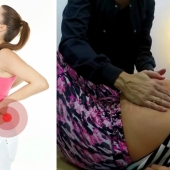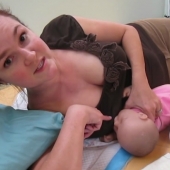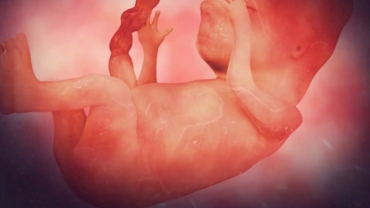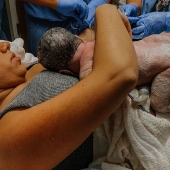If you had a vaginal birth, the area of your vagina and rectum will be painful and sore, especially if you’ve had an episiotomy or small incision to widen your birth canal. To help relieve swelling and soreness, apply an ice pack to the tender area for the first twenty-four hours.
After the first day, your healthcare provider may recommend a sitz bath. To prepare a sitz bath, fill a small basin with warm water and place it on the toilet. Sit in it for at least twenty minutes, three to four times per day, for about a week. Sitting in a shallow tub of warm water can also help relieve soreness.
Many new mothers find they have hemorrhoids. Hemorrhoids are swollen blood vessels usually caused by the strain of the contractions and pushing during labor and delivery. To reduce discomfort, avoid constipation by drinking plenty of liquids and eating leafy vegetables, fruits, and grains. If this doesn’t help, ask your healthcare provider about using a stool softener or a mild laxative. You can also use witch hazel to lessen the pain of hemorrhoids or an episiotomy.
Your healthcare provider may recommend pelvic floor exercises called kegels to help you tighten the muscles stretched during labor.
To become aware of the pelvic floor or kegel muscles, contract or tighten the muscles deep inside you as you would to stop the flow of urine. However, you should not practice kegels each time you urinate, because you won’t empty your bladder completely.
Instead, make a habit of practicing a set of kegels sitting, standing, or lying down. Hold as tightly as you can for three seconds and relax for six seconds. Do ten kegels in a set and three to five sets each day.
If you’ve had a cesarean section, your recovery will typically be longer than a vaginal birth. Have plenty of help available for the first few weeks you are at home while you physically recover. Avoid lifting heavy objects or doing anything that would strain abdominal muscles.
Two to four days after birth, your breasts may become engorged with milk. Engorgement causes breasts to feel tender, full, and hard, and can make it difficult for your baby to latch on. Engorgement can last for forty eight hours or longer.
To relieve the pain of engorgement, breastfeed your baby. Before feeding you can stimulate milk flow by warming your breasts with warm compresses or by taking a short, warm shower.
After feedings, ice packs will help reduce the swelling. Your healthcare provider may recommend you take an anti-inflammatory pain reliever like Ibuprofen to relieve the discomfort of engorgement.
Engorgement is likely to occur if your baby has not been nursing frequently, has not been latching on properly, or if you have been limiting the baby’s time at your breast, so make sure to breastfeed often.
During the first days or weeks after birth, call your healthcare provider if you experience any of the following: vaginal bleeding that doesn’t seem to decrease, or suddenly increases; bleeding that is still bright red after the first 4 days; passing a clot bigger than a golf ball; foul smelling vaginal discharge; fever above one hundred point four degrees or flu-like symptoms; burning, bloody or frequent urination; phlebitis which is a tender red area on the leg that feels warm; or painful breasts with red spots or streaks.
After the delivery of your baby, your first instincts are to do what you can to care for your newborn. But as you recover from labor, also take the time to care for your own body. Remember, the better you feel, the easier it will be to care for your baby.
- 5044 views













